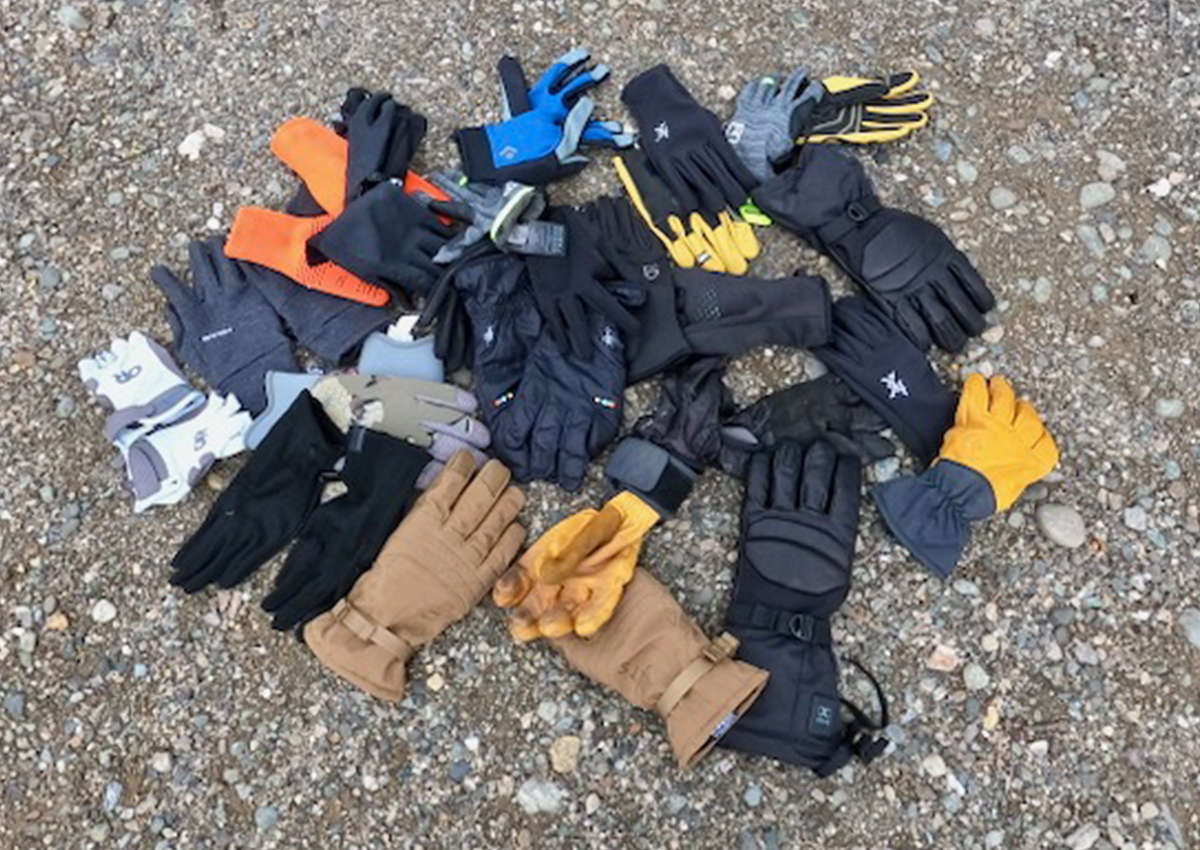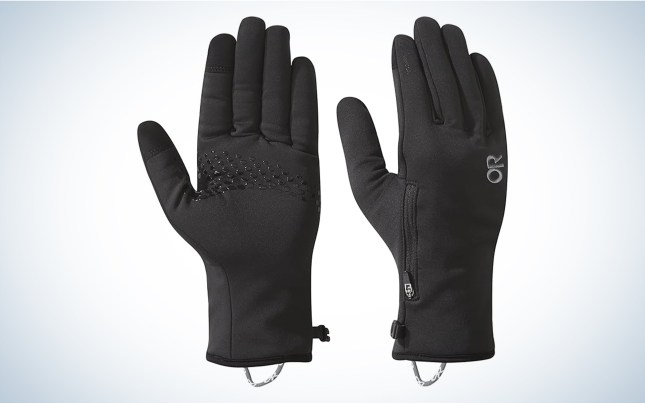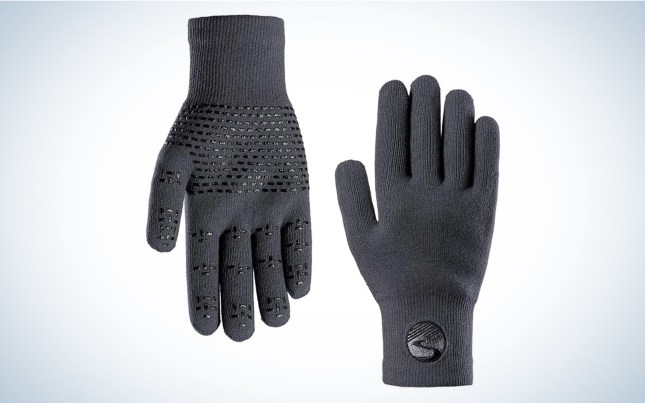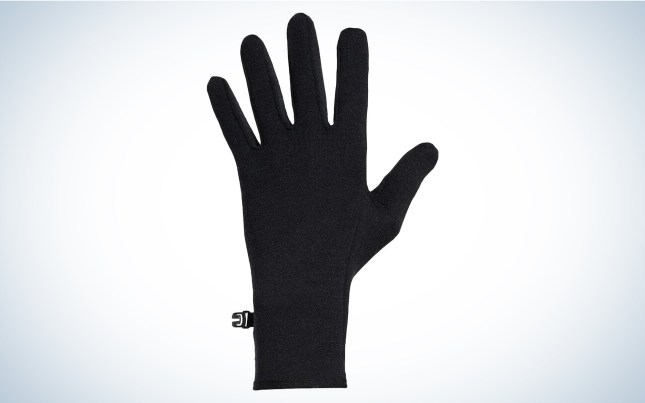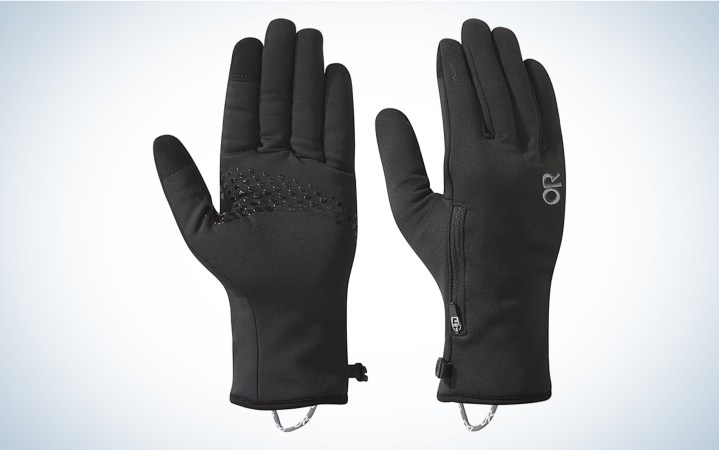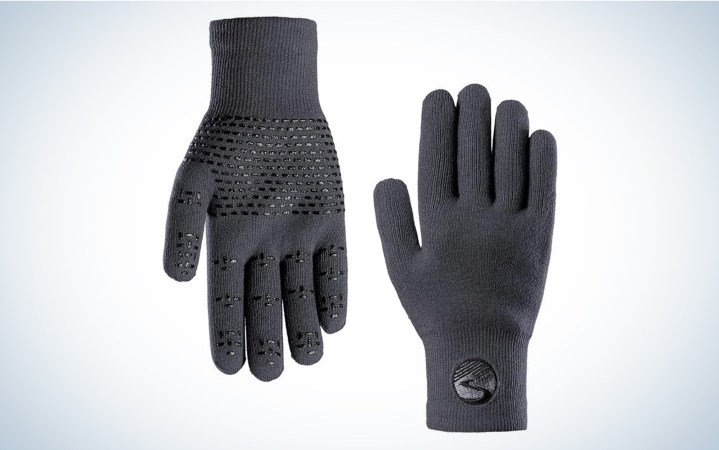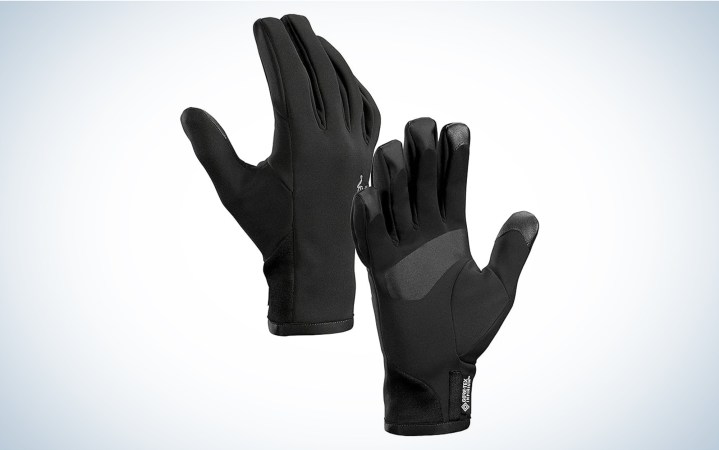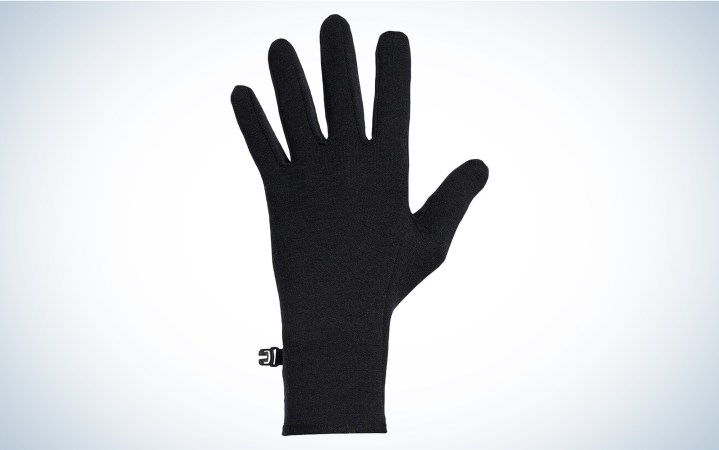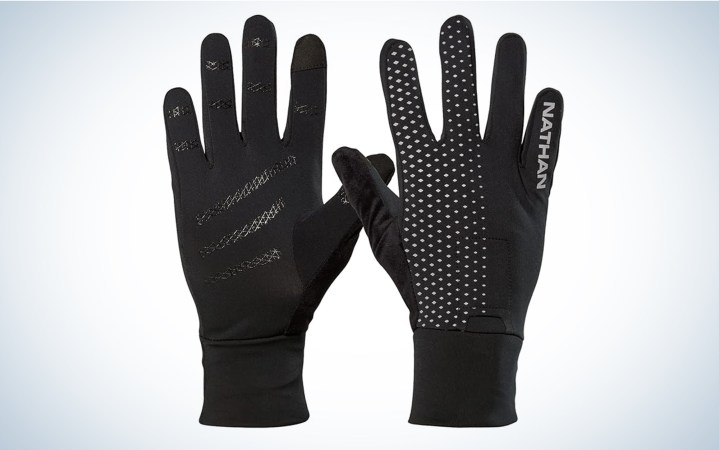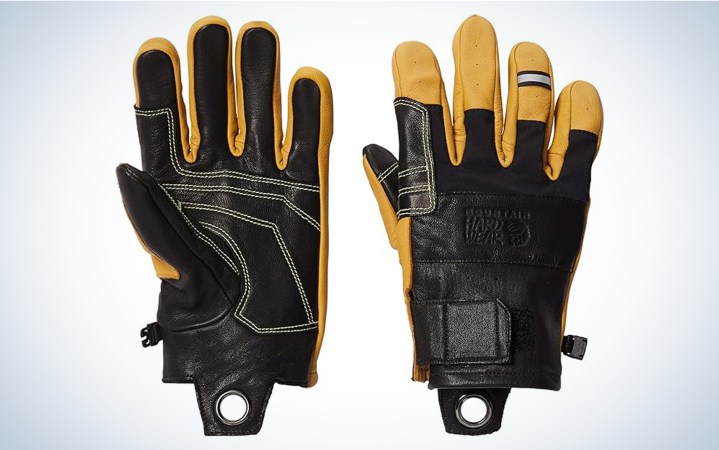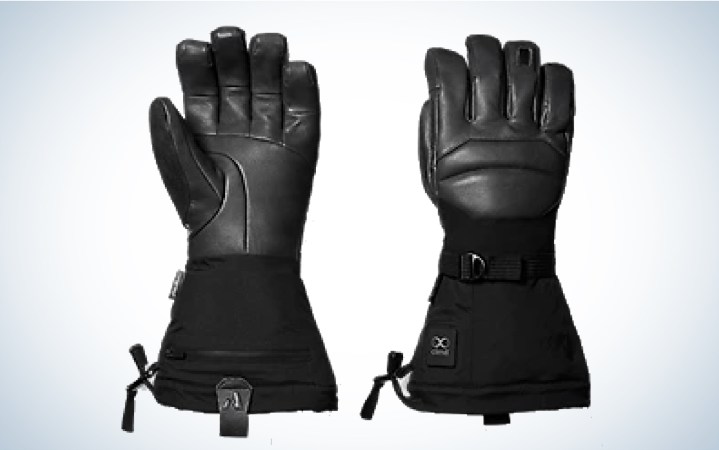We may earn revenue from the products available on this page and participate in affiliate programs. Learn More ›
I bet if you look around your office or house, you’ll find you actually own more gloves, including hiking gloves, than you realized. That’s because each pair has a different purpose and temperature rating. Beyond winter gloves that keep our hands warm, gloves might protect our skin from heat, harmful UV rays, brambles that can tear our skin, chemicals, or poison. They can keep our hands clean from mud or dirt. They can keep our hands dry. And they can give us a better grip. I tested as many uses as I could among more than a dozen of the best hiking gloves, and came up with seven favorites for your outdoors pursuits.
- Best Overall: Outdoor Research Versaliner Sensor Gloves
- Best Waterproof: Showers Pass Crosspoint Knit Waterproof Gloves
- Best Windproof: Arc’teryx Venta Glove
- Best Liner: Icebreaker Merino Quantum Gloves
- Best for Trail Running: Nathan HyperNight Reflective Gloves
- Best for Rock Scrambling: Mountain Hardwear Belay Glove
- Best Heated: Eddie Bauer Guide Pro Smart Heated Gloves
How I Tested the Best Hiking Gloves
I live in Alaska, so we wear gloves more times than not. For this piece, I concentrated more on gloves that you would wear while hiking in different climates. I am a backcountry guide so I had plenty of opportunities to test the gloves in contention for this piece. My testing cycle was during the summer months here, but that doesn’t mean it wasn’t cold, as Alaska throws out unforgiving weather patterns all the time.
Temps ranged from 35 to 70 degrees, and we received a lot of rain (even some sleet and hail) and wind during my testing period. I evaluated intended use, materials, comfort, grip, fit, and rub spots for all the gloves. In terms of weather resistance, I judged how cold and/or wet my hands felt, how the gloves dried out after rain, and even their sun blocking abilities. I also noted when there were special features that made certain pairs stand out from others. The following gloves are the best ones I found for specific conditions and uses.
Best Hiking Gloves: Reviews & Recommendations
Best Overall: Outdoor Research Versaliner Sensor Gloves
Best Overall
Outdoor Research Versaliner Sensor Gloves
Key Features
- Sizes: XS to XXL
- Weight: 2.8 ounces
- Colors: Black only
- Both men’s and women’s versions available
Pros
- Two gloves for the price of one (liner and shell)
- Zippered pocket on back of the liner glove for storage of shell glove
- Lightweight
- Touchscreen capability
Cons
- Cinch around shell glove is not tight enough (water can get in)
- No touchscreen capability on the shell
- No way to attach shell glove to liner
With this glove, you’re prepared for changing temperatures and environments. The liner glove is a polyester/spandex blend that wicks away moisture, while the outside shell glove has a Pertex Shield that pushes away water. Both gloves have a rather large pull loop at the wrist that you can get several fingers through to easily pull them into place.
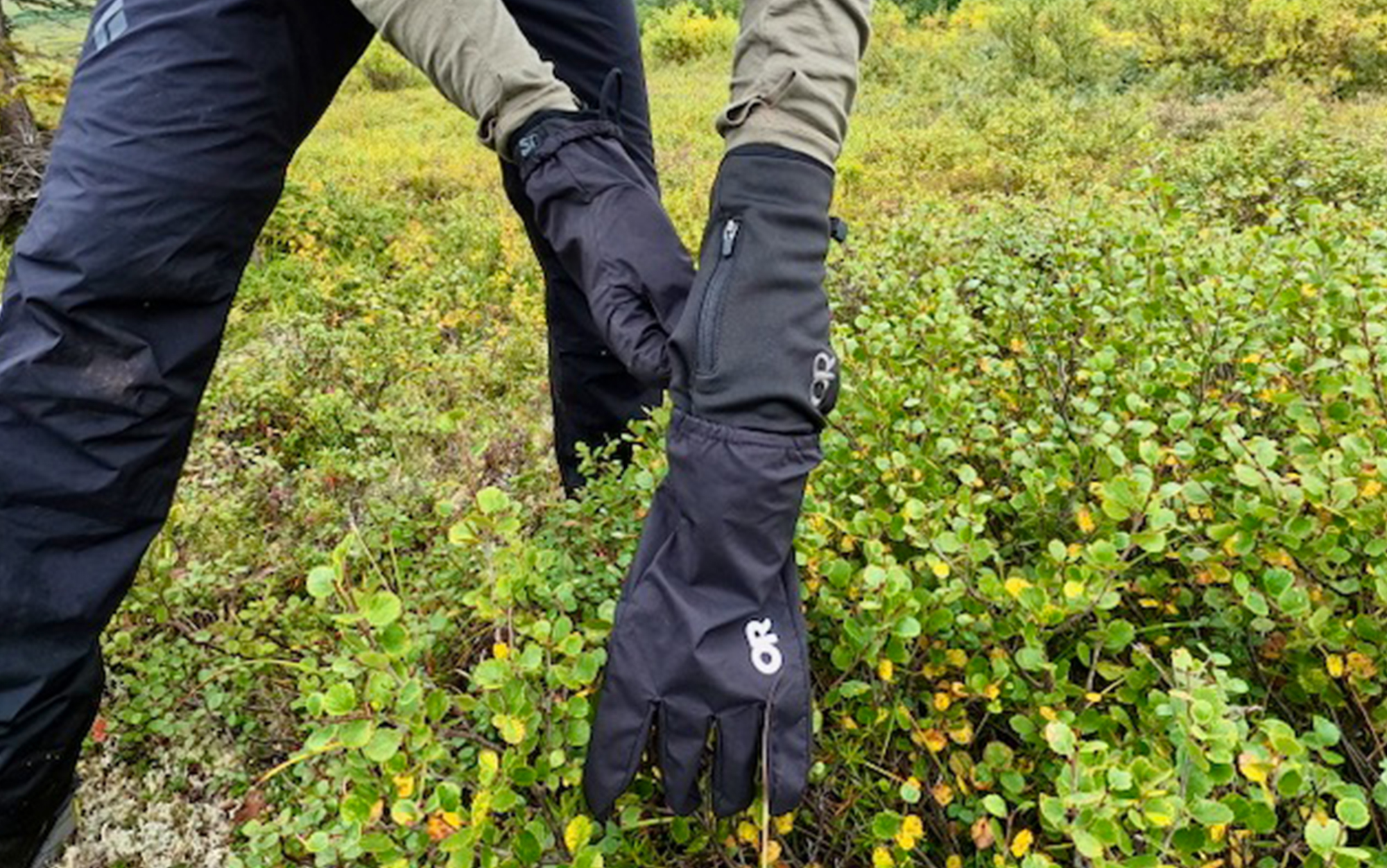
The liner gloves were the most impressive part of the package with multiple features. The touchscreen fingertips worked well for using my phone, though the shell doesn’t have touchscreen capability. There is a glove clip that keeps the pair together when not in use. They also have a nice size zippered pocket on the back that fits the shell glove when not in use. I will say when the shell glove is stuffed inside it, there’s a weird bulge on the back of your hand. You can also use the pocket to store hand warmers, money, or a key.
Best Waterproof: Showers Pass Crosspoint Knit Waterproof Gloves
Best Waterproof
Showers Pass Crosspoint Knit Waterproof Gloves
Key Features
- Sizes: S to XL
- Weight: 2 ounces
- Colors: Four options (black, neon green, safety orange, ice blue)
- Unisex
Pros
- Waterproof
- Grippy palm
- Can be washed
- Lightweight
Cons
- Can get dirty
- No touchscreen capability
- Takes a long time to dry out (can put in the dryer)
- Fabric can pull
As a hiking guide in Alaska, waterproof layers are a must because it rains a lot. Since these weigh next to nothing, adding a pair of waterproof gloves to my pack was a no-brainer (no clip, so just have to roll them up).
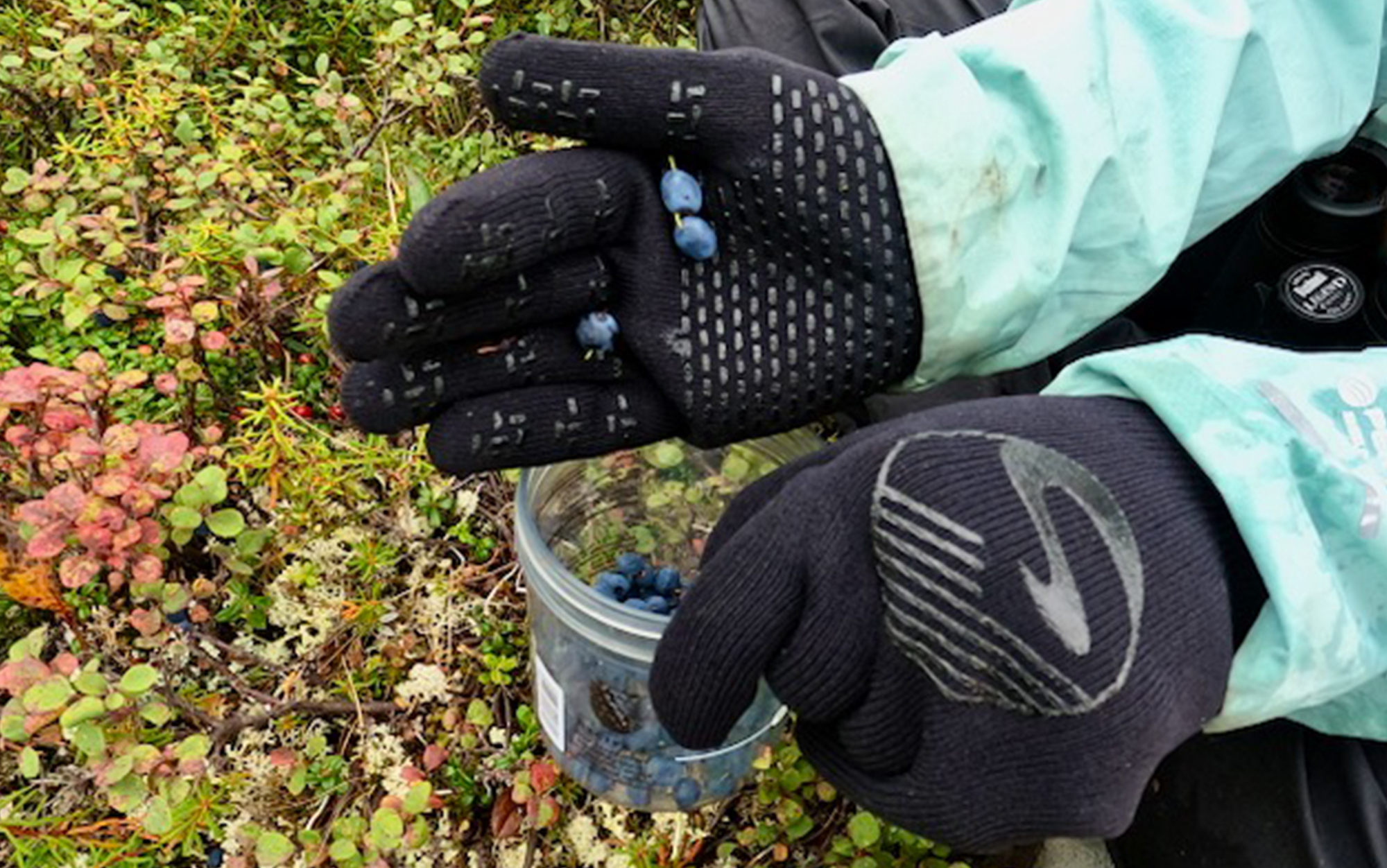
There are three layers of protection on these: There is an outer shell that is water-resistant, a middle membrane that is waterproof, and an inner liner with a Coolmax blend to wick sweat away. I can attest that after wearing these during our rainy season, my hands were happier. They never soaked through even after hiking five hours in the pouring rain. My only gripe was that the outer layer does take a bit of time to dry out (I don’t own a dryer, but that would be the solution).
The fit is tight to your hand with no bunching, and they extend to mid-wrist, so they can fit under your jacket cuff to keep a nice seal. The palm and fingers have a silicone pattern with over one hundred tiny raised rectangular sticky beads for better grip, which worked really well for berry picking.
Best Windproof: Arc’teryx Venta Glove
Best Windproof
Arc’teryx Venta Glove
Key Features
- Sizes: XS to XL
- Weight: 1.8 ounces
- Colors: Two options (black and forage)
- Unisex
Pros
- Windproof
- Breathable
- Form fitting
- Touchscreen capability
Cons
- No glove clip
- Weird tag on the outside
Sometimes you don’t need a lot of features to get the job done. The Venta glove simply works for light outdoor adventures like hiking in the wind or skiing in the snow. The nylon exterior blocks out the wind and is water-resistant, while the inside fabric is soft and warm, but microporous, so won’t absorb sweat.
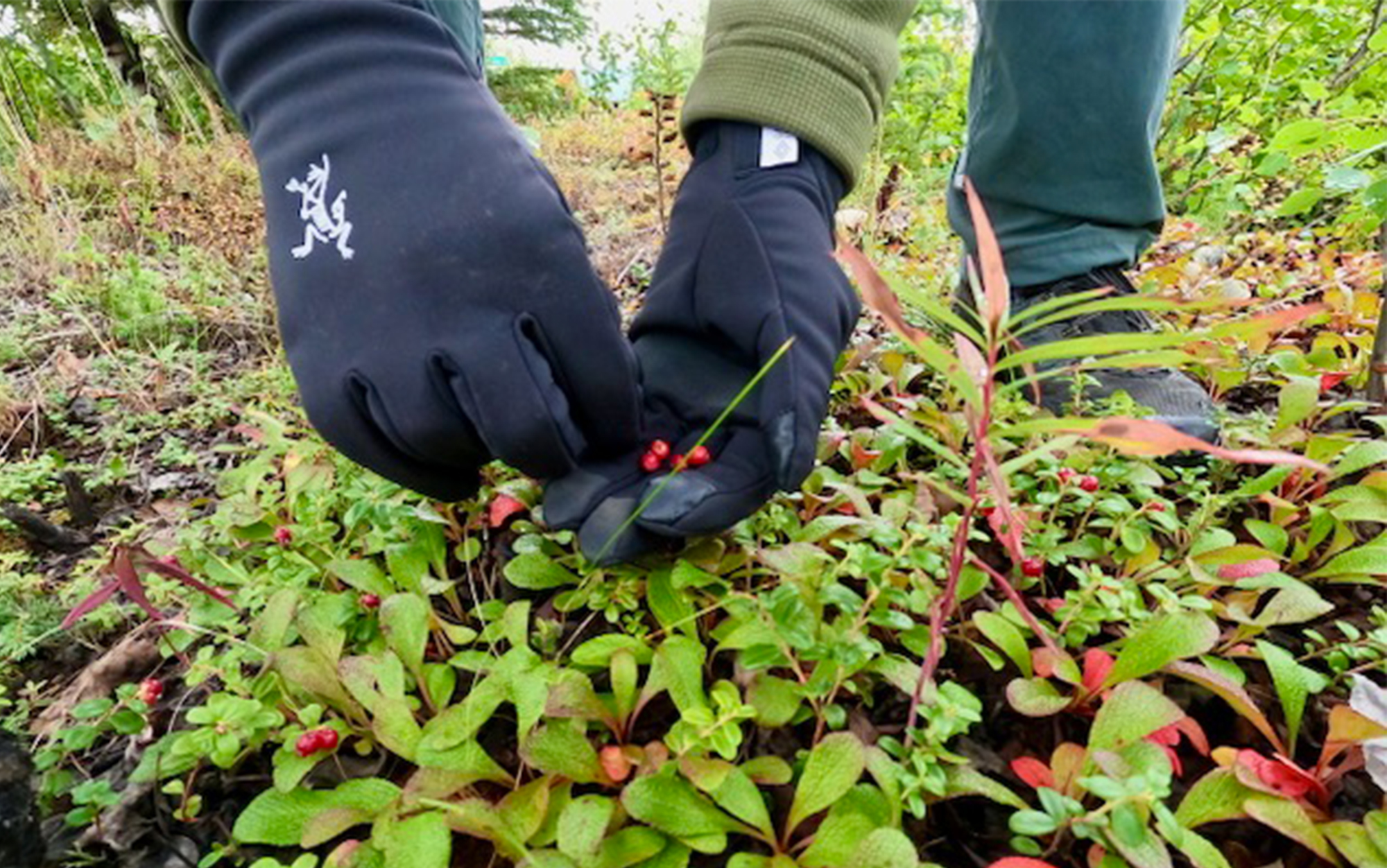
The sensors are aptly placed on the pointer finger and thumb, and they truly do work very well. The palm also has a layer of sticky reinforcement across it to give a better grip. When they say “it fits like a glove,” it truly does, which could be a problem for unisex sizing, but they fit both my wife and I fine. And another downside was not having a clip to keep them together when not in use or carrying in my pack.
Best Liner: Icebreaker Merino Quantum Gloves
Best Liner
Icebreaker Merino Quantum Gloves
Key Features
- Sizes: XS to XL
- Weight: 1.69 ounces
- Colors: Black only
- Unisex
Pros
- Lightweight
- Comfortable
- Clip together
- Touchscreen capability
Cons
- Expensive for a liner
I feel like I’ve tried a million glove liners, and when I moved to Alaska, I realized how important it was to wear multiple gloves and mitts to battle the cold. These are made of nearly all merino wool, which means they are moisture-wicking and provide excellent insulation. I used them alone, but also paired them with other gloves and mitts easily. Having touchscreen capability on the thumb and pointer finger is always a bonus on gloves, as is a silicone material for better grip, especially on lightweight gloves like these.
Best for Trail Running: Nathan HyperNight Reflective Gloves
Best for Trail Running
Nathan HyperNight Reflective Gloves
Key Features
- Sizes: XS to XL
- Weight: 1.6 ounces
- Colors: Two options (black and yellow)
- Unisex
Pros
- Nose wipe
- Reflective
- Small pocket
- Touchscreen capability
Cons
- Not waterproof
I am not a runner, but my trail-running tester said these struck the right balance. The stretchy spandex/polyester meant dexterity, while the fleece interior lining kept her hands warm when temps hovered around freezing. Yet they wicked away moisture when she heated up.
The bright color and the reflective beads are a nice touch, making it harder to lose them and easier to find them on the trail again if you do. Plus, there are two extra features—a small pocket on the back to add a small running strobe light and a chamois cloth on the thumb for wiping your nose. Lastly, the touch screen capability worked well.
Best for Rock Scrambling: Mountain Hardwear Belay Glove
Best for Rock Scrambling
Mountain Hardwear Belay Glove
Key Features
- Sizes: XS to XL
- Weight: 4.3 ounces
- Colors: Black and yellow only
- Unisex
Pros
- Durable
- Leather
- DWR coating
Cons
- Feel the leather seems inside
- No plush lining
Made of a goat skin leather combined with four-way stretch knuckles, I loved these for mixed terrain when you need to use your hands to move up and down. I’ve been using an older version of these gloves for years, and they’ve been my go-to through the Alaska winters. They perform especially well on rocky scrambles around Denali National Park and Preserve. I’ve beat up my pair over the years, so they’ve proven that they can withstand the abuse of the mountains.
Best Heated: Eddie Bauer Guide Pro Smart Heated Gloves
Best Heated
Eddie Bauer Guide Pro Smart Heated Gloves
Key Features
- Sizes: XS to XL
- Weight: 6.4 pounds (includes batteries)
- Colors: Black only
- Both men’s and women’s versions available
Pros
- Turns on automatically when your hand is in the glove
- Controlled via an app
- Double cinch-around wrist
- Nose wipe on back of thumb
Cons
- Expensive
- No touchscreen capability
- Bulky battery
- No way to control settings from the glove (app only)
These are not the gloves for your everyday walk, but for colder days and even colder activities. Not only do they have Primaloft insulation, a leather shell with waterproofing, and two points of cinching—plus removable leashes—but they are also heated.
I’ve tried many types of heated gloves, and what sets these apart is that they automatically adjust to your needs. The AI technology knows when you need more heat and can be controlled via an app, clim8. You can’t control the settings on the glove itself. The app is easy to understand and will adjust the inside temperature of the glove up to 95 degrees. As you continue to wear them, the app and the gloves will adjust to your input to understand when you need more or less heat.
The pair comes with two rechargeable batteries that can last up to four and a half hours, but I will admit the battery feels a bit bulky. The nose wipe on the thumb is always a nice touch.
Things to Consider When Buying the Best Hiking Gloves
Comfort
You try on shoes at the store, so you definitely should try on gloves while shopping. Pick some things up with them, grip and squeeze. Make sure you do not feel any rub spots or seams that could cause irritation. Most importantly, make sure they fit properly. You don’t want baggy gloves, as they will get in the way and decrease warmth.
Material
Gloves can be made of many different materials. From latex to rubber to leather to synthetic, the materials make a difference depending on the activity. There’s also the consideration of the materials that keep you warm and dry, like Primaloft, down, and Gore-Tex.
Intended Use
If you are looking for a glove for a specific activity, like trail running, you need to seek out that glove. If you are looking for something that can stand alone or be added under another glove, your best bet is some type of liner like the Icebreaker Merino Quantum Gloves.
FAQs
That is personal preference. As you can see from this list, there are many types of scenarios where you may want to wear gloves. If the weather is nice, then it is probably not necessary. But most of the time, you are battling some elements, like rain or too much sun.
I have been told your skin is the best waterproof layer and I have personally hiked hundreds of miles without waterproof hiking gloves. And when I have worn water-resistant gloves in the rain, they eventually soak through and make my hands wet and cold. Ever since I moved to a place where it rains a lot, waterproof gloves have become a staple in my Ten Essentials kit when I go out, even for a day hike.
I did not touch upon fingerless gloves here, but they are certainly an option. Obviously having your fingers exposed allows you to have more precision for tasks and to use your phone easily. Some touchscreen-capable gloves actually are more of a pain than a help, and you just end up taking off your glove to use the phone. Fingerless gloves also allow your hands to stay cooler. However, they do collect sweat, dirt, food, sunscreen, and other gross stuff. One pair of fingerless gloves that I did like were the Outdoor Research ActiveIce Chroma Full Sun Gloves.
Poles can be tough on your hands, and gloves can protect them from the rough grips. One good option is the Black Diamond Trekker Gloves, which have a grippy interior for that purpose.
The most common reason that hands are still cold with gloves on is poor-fitting gloves. Don’t buy gloves that are too large and have a lot of extra room in the fingers. You want them to be snug, but not too tight. The gloves are helping your hands and fingers stay warm, but it is the heat generated from your hands that keep the gloves warm, which is why you don’t want them to be too restrictive. If your hands are still cold after trying various types of gloves, including mittens which tend to be warmer, you may want to see a doctor as you may have problems with the blood vessels throughout your hand.
Read Next: The Best Winter Gloves
Why Trust Outdoor Life?
Since 1898, OL has been a leading authority in testing and reviewing hunting gear, fishing tackle, guns and shooting equipment, and much more. We have more than a century-long history of evaluating products, and we’re now bringing that expertise to online reviews. Our editors are experienced outdoorsmen and women, and most importantly, we’re trained journalists. We prioritize field testing and objective data when reviewing products. We conduct interviews with gear manufacturers and engineers as well as outdoor experts so that our readers have an understanding of how and why a product works—or doesn’t.
Advertising does not influence our gear reviews and it never will. While we always focus our coverage on standout products—because we want our readers to be aware of the latest and greatest gear—we also cover the flaws and quirks of any given product.
Final Thoughts on the Best Hiking Gloves
There are hundreds of gloves out there and narrowing the field to the best for hiking is a tough task. It comes down to your preference and the activity you are choosing. Your glove drawer should actually have many types of gloves for the different weather patterns. Any time you head outside for a hike or backpacking trip your pack should have some type of glove in it as you never know when you may need a pair.
- Best Overall: Outdoor Research Versaliner Sensor Gloves
- Best Waterproof: Showers Pass Crosspoint Knit Waterproof Gloves
- Best Windproof: Arc’teryx Venta Glove
- Best Liner: Icebreaker Merino Quantum Gloves
- Best for Trail Running: Nathan HyperNight Reflective Gloves
- Best for Rock Scrambling: Mountain Hardwear Belay Glove
- Best Heated: Eddie Bauer Guide Pro Smart Heated Gloves
